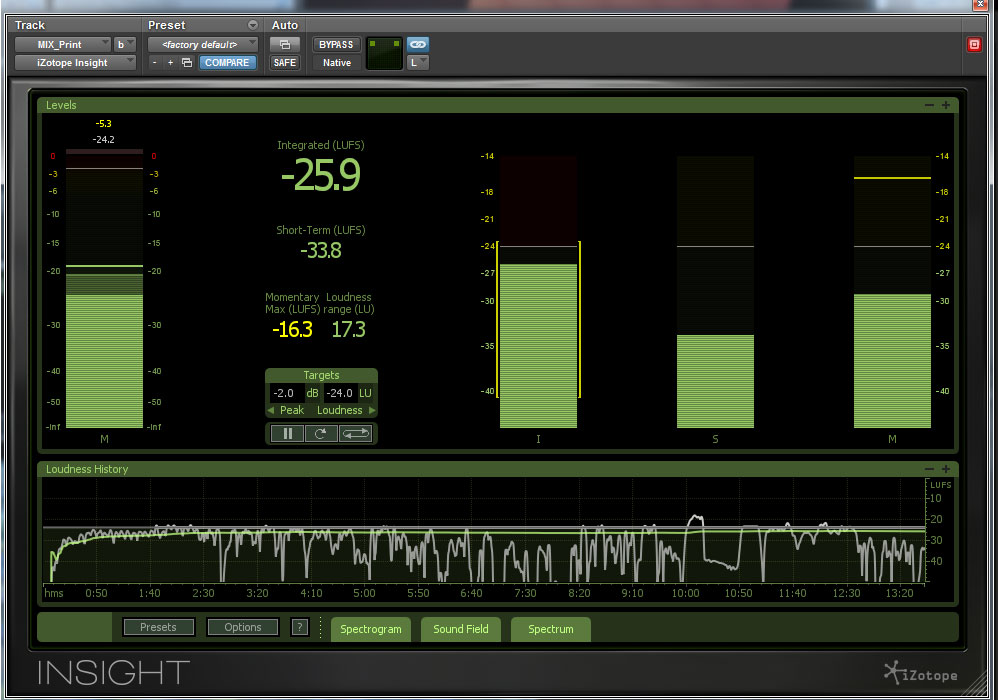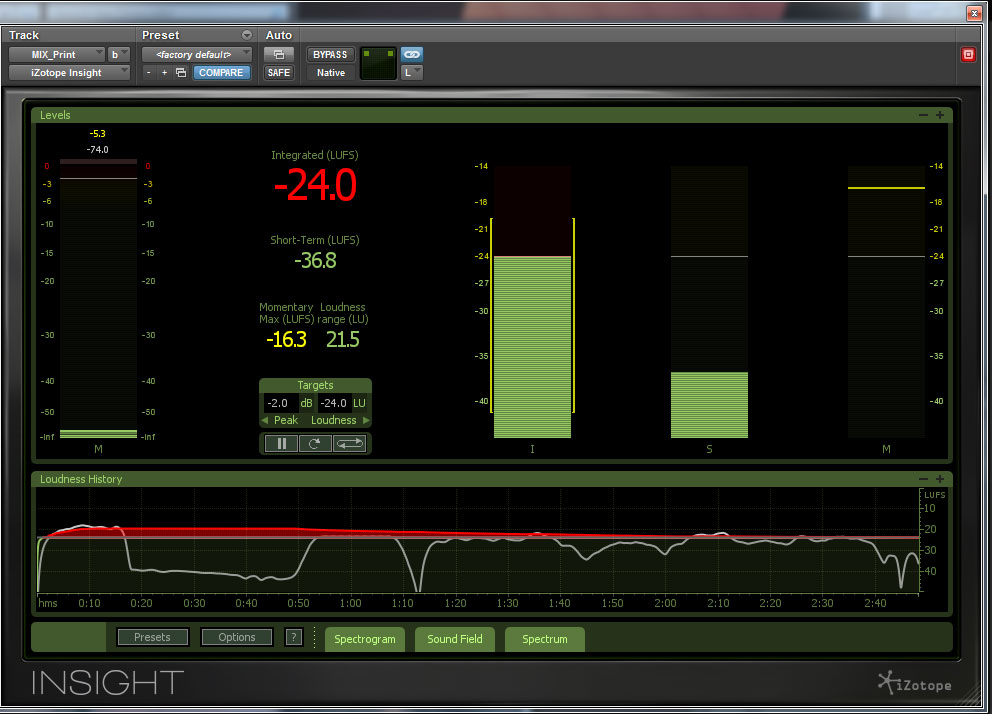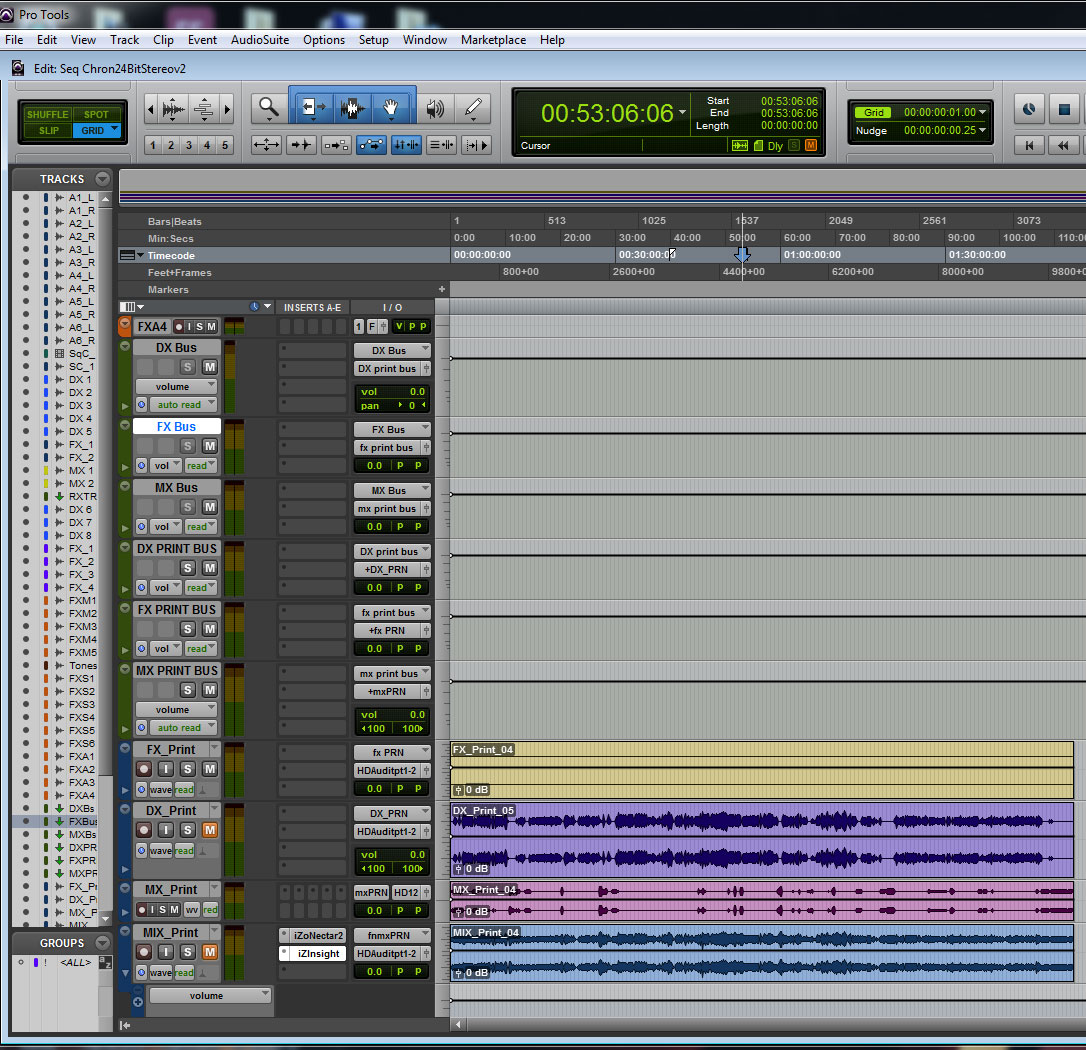Yes, definitely check. I'm not sure if/how/when Canadian law allows for revisions to the ATSC specs or how/when the actual broadcasters implement it. The US preset was probably almost certainly created before the gating function was introduced and before the ATSC update which included it. To be safe, choose one of the two ITU revisions I listed. BTW, the ITU (International Telecommunications Union) are the organisation which invented the loudness measurement. Both the ATSC and EBU specs are derived from these ITU standards, which is why LKFS and LUFS are different names for exactly the same thing.
I just want to check where in your signal chain you have placed your Insight plugin. It must be the last plugin/processor on your main mix bus. IE. The measurements/specs are for the complete mix (not just say for the dialogue), after all compression, limiting and other processing has been applied.
G
So I'm using BS.1770-3 for USA
Also, what I did was created a final track where I printed the DX, FX and MX tracks into a stereo MIX track where I bounced a PRINT of all three tracks. I put a compressor on this print track first, and then I put insight, on this final track. So the This is the final track that I will be bouncing. So it's the very last plugin. Does that make sense?
And here's what I did for the audio, and I'll tell you everything, even though it's a bit embarrassing to admit all of it.
- In the beginning I created a 4 separate mono dialog tracks and two stereo FX tracks and two MX tracks according to instruction.
- I spent quite some time checkerboarding the dialog per person.
-Then I found out that every time I had to clean up the audio, I had to send every bit of dialolg to RX4. And also I couldn't remember everything I had done to a DX track to clean it up and I wanted to to have a record.
-So I restarted the process. Instead of checkerboarding the DX track by character, I checkerboarded the tracks by conversation. Then I took entire conversations to RX4, cleaned it up, saved it as a separte RX file, with all changes saved in the "History" section of that file, and then I exported the audio and reimported that audio into proTools.
- Also, My FX_Mix track is empty.
- I created the FX tracks in stereo, but when I was originally separating the DX tracks, I was also separating the FX events that was recorded by the mic, and I couldn't drag them to the stereo FX tracks. So I created a couple of other Mono tracks and called them FX, and stored the clips there. (Edit: I did this because of my unfamiliarity with busing at the time. I had created a mono DX bus for all the DX tracks, and I wanted to use the same bus instead of messing around with a new one, and so I just created a couple of more mono tracks and called them FX_DX and used the same bus)
(I wasn't as familiar with proTools at the time, with busing and everything, still am not, and did not want to recreate my template all over again and screw something up. So I just kept all effects in the bottom two DX tracks. If I introduced any stereo Foley, I just put them in the MX track, which occurred like three or four times.)
Now, while this is not the professional approach, I knew that my film is not going to have a 5.1 surround release, as I don't have the setup for that. And I was planning on releasing online, and trying to get broadcast sales (which also, I have no idea if it's going to happen). So what I thought was, if somebody really wants the movie bad enough to release in a theater, or if broadcast wants to be able to show it in other languages, well, they can redo the audio, and pay for it. Because my audio corrected proTools file will be useless to them.
So this was my thinking in going into audio correction.
Also, when I first created the DX_Print and MX print, and MIX Print, tracks, I had created 5.1 tracks, and the sound seemed to be more muted than the original, as two of the tracks were empty. The mono went into one track, the stereo music went into two other tracks and then there were two empty lines in the 5.1 Mix.
So I decided to have the final print in stereo, and it was quite a challenge for me to create all these separate buses, to get all the audio to the final print.
That's my audio post experience

. Just wanted to tell you, so that you have some idea of what kind of idiot you're dealing with when you provide advice.
Cheers,
Aveek
Edit: proTools mix image




 . Just wanted to tell you, so that you have some idea of what kind of idiot you're dealing with when you provide advice.
. Just wanted to tell you, so that you have some idea of what kind of idiot you're dealing with when you provide advice.
